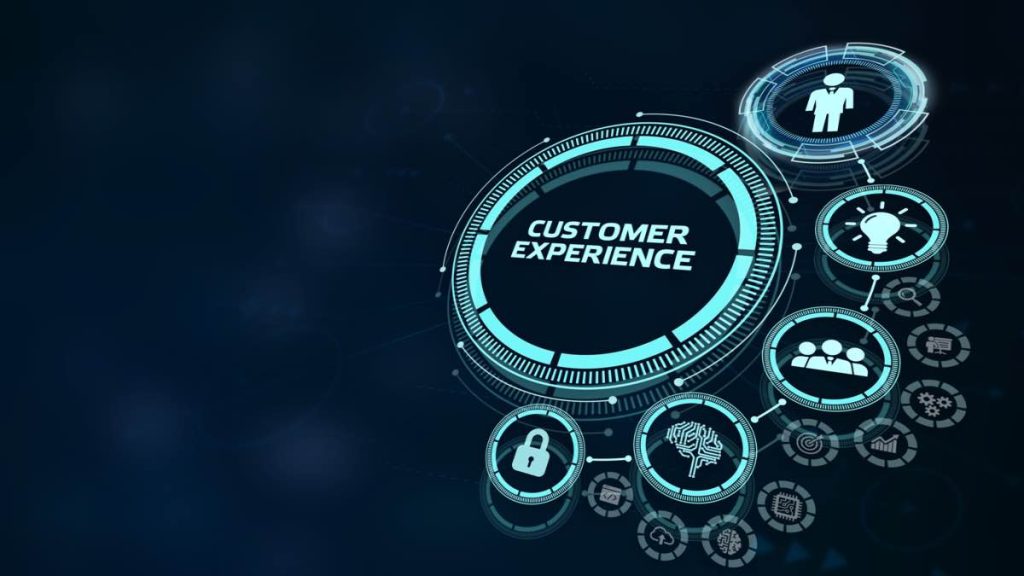
The customer’s needs must be the starting point for any digital offering – and at the latest since the beginning of the pandemic, this has become not just a “nice to have” but a true “must” for telecommunications providers. Precisely on a saturated market, where various providers’ offerings seem very similar, new customers can be acquired almost exclusively by enticing them away from the competition and customer loyalty is declining rapidly, so it is critical to offer an outstanding customer experience and appropriate content at all times.
Given their experience with other platforms, shops, and services, customers today are used to having control and flexibility with respect to contracts, services booked, and the channels and devices they can use to access services. CSPs still have to play catch-up in this regard. For example, a custom-tailored increase of the data volume for mobile phone customers is not always possible. Other up- and downgrades are frequently also bound to rigid contract dates. In Germany, the latest update of the telecommunications law (Telekommunikationsgesetz, TKG) that grants telco customers more rights emphasizes that this is not user-friendly and especially no longer in keeping with the times.
Self-service, channels & interfaces – Creating the Bases for Data Analysis
Of course there are a lot of starting points on different levels to change this situation, increase customer satisfaction, and thus keep existing customers and acquire new ones. Especially promising are those approaches that are based on actual user data and start where customers actually “live.” This is where customer journey analytics come into play.
The basis for this:
- CSPs should analyze customer behavior at all touchpoints in order to gain extensive insights into customers’ needs and desires and enable seamless, personalized customer addressing on all communication channels, while complying with data privacy requirements, of course.
- A comprehensive view of all customer interactions with the company helps here, for example, via the website, the call center, via social media, and the retail store.
- Data silos must be linked, and different systems and data sources integrated via interfaces.
- Data should be aggregated and evaluated in suitable tools (e.g. data lake, data warehouse).
- A cross-channel platform offers customers a seamless customer experience. Usability should win people over on all channels and for all devices.
The above-mentioned tools “data lake” and “data warehouse” enable companies to combine raw data from different sources into a central repository for analysis. Their concepts vary in their requirements and application cases, but they serve the same purpose: to detect patterns and predict probable results.
Personalization – What Customers Want
The user data gained and analyzed can be deployed to display content and offerings for customers that are relevant and interesting for them right now – and only these.
Here, personalization can be accomplished on different levels:
- Personalization based on personas: With the user data, the various personas can be distinguished and addressed purposefully with offers of interest to them, for example for especially price-sensitive customers, or for those who prefer a particular device brand. This, in turn, enables personalized addressing via all communication channels, a personalized product display, individualized catalog sequence, price modifications, pre-selection in the catalog, marking with badges or recommendations.
- Individualized personalization: This way the customer self-service area can be personalized. If a user frequently takes a look on the bill or the data volume used, the link to these can be displayed prominently on the start page of the customer’s account.
- Customer journey personalization: The customer journey can also be personalized, for instance, by adjusting the steps in the contract signing sequence. This way, customers interested in details can be given an additional overview of the contract details, while for price-sensitive customers, potential savings due to current special offers can be visualized with crossed out prices.
The goal: To enable customers to get the information and perform the actions they desire with as little effort as possible. All of this contributes to a pleasant customer experience.
Deploying Big Data – Detecting Patterns
Trends and patterns can be detected and anticipated using data mining, machine learning, and predictive analytics, and measures taken on this basis:
- Churn prevention: If the data indicates an increased risk of termination, selected attractive offers are made to customers in order to retain them.
- Support prioritization by addressing abandoned shopping carts: Based on the data obtained, shopping carts can be categorized and customers with great potential can get priority access to the service channels (e.g. support chat or call center) in order to use agents’ limited capacity efficiently.
- Development of new products: Potential developments and needs can be predicted with data analysis. This enables CSPs to develop appropriate products and services well in advance.
Here too, data lakes and/or data warehouses can serve as a source of information. Only by aggregating and analyzing all the data using relevant questions can one make reliable predictions about the potential or expected behavior of customers. By using these technologies, CSPs can detect entrepreneurial opportunities faster and secure a competitive advantage.
Central Platform Solution for Greater Customer Satisfaction
The basis for such a design of the customer experience is ideally a central platform solution, which is able to connect all relevant data sources and systems via interfaces and connectors, while although being powerful enough to work with the required quantities of data.
This can be optimally implemented as part of a composable business model. Not just the technological solution itself is modular and flexible here. In addition, the company works on the basis of agile principles in flexibly combinable, quick-acting units.
Inside Telecom provides you with an extensive list of content covering all aspects of the tech industry. Keep an eye on our Expert Insights section to stay informed and up-to-date with our daily articles.